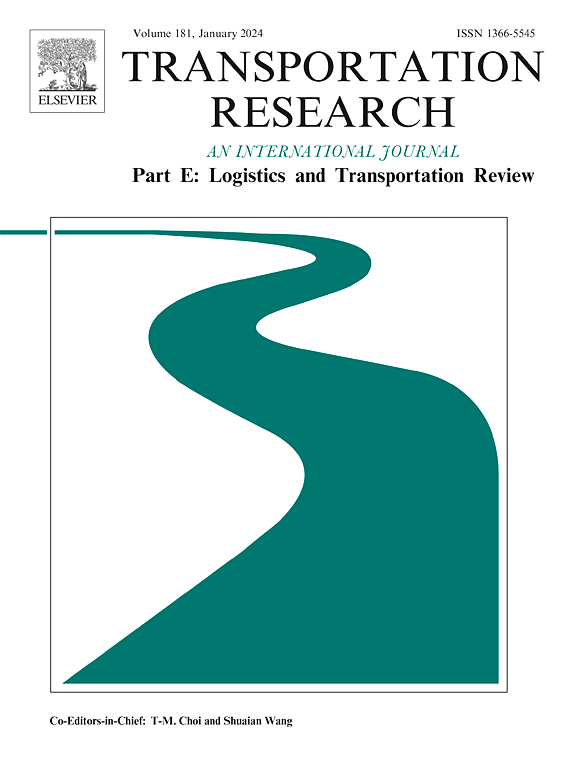Does antitrust immunity matter for complementary shipping alliances? Competition and welfare analysis
IF 8.3
1区 工程技术
Q1 ECONOMICS
Transportation Research Part E-Logistics and Transportation Review
Pub Date : 2025-04-12
DOI:10.1016/j.tre.2025.104125
引用次数: 0
Abstract
Shipping alliances are granted antitrust immunity (ATI) as a cooperative strategy for market development. However, the European Commission has ruled that these alliances no longer benefit from ATI treatment within the European Union (EU), raising concerns among governments about the implications for alliances and their associated ATI privileges. We analyze the alliance strategies of shipping companies, shippers’ consumer surplus, and governments’ social welfare in local and intermodal markets, focusing on service differentiation and economies of scale. We examine equilibrium decisions within three typical structures—no alliance, single alliance, and double alliance. Results show that shipping alliances significantly influence strategic decisions by lowering freight rates through the internalization of negative externalities from independent pricing. For both alliances and independents, moderate-scale economies and service differentiation reduce freight rates while increasing demand. Shipping companies form alliances to enhance competitiveness when these factors are significant, producing higher consumer surplus and social welfare. However, in markets with low service differentiation and scale economies, new alliances can undermine the benefits of both pre-existing alliances and independents. In such cases, social welfare is higher without alliances, and canceling alliance agreements may be a better market decision.
求助全文
约1分钟内获得全文
求助全文
来源期刊
CiteScore
16.20
自引率
16.00%
发文量
285
审稿时长
62 days
期刊介绍:
Transportation Research Part E: Logistics and Transportation Review is a reputable journal that publishes high-quality articles covering a wide range of topics in the field of logistics and transportation research. The journal welcomes submissions on various subjects, including transport economics, transport infrastructure and investment appraisal, evaluation of public policies related to transportation, empirical and analytical studies of logistics management practices and performance, logistics and operations models, and logistics and supply chain management.
Part E aims to provide informative and well-researched articles that contribute to the understanding and advancement of the field. The content of the journal is complementary to other prestigious journals in transportation research, such as Transportation Research Part A: Policy and Practice, Part B: Methodological, Part C: Emerging Technologies, Part D: Transport and Environment, and Part F: Traffic Psychology and Behaviour. Together, these journals form a comprehensive and cohesive reference for current research in transportation science.

 求助内容:
求助内容: 应助结果提醒方式:
应助结果提醒方式:


